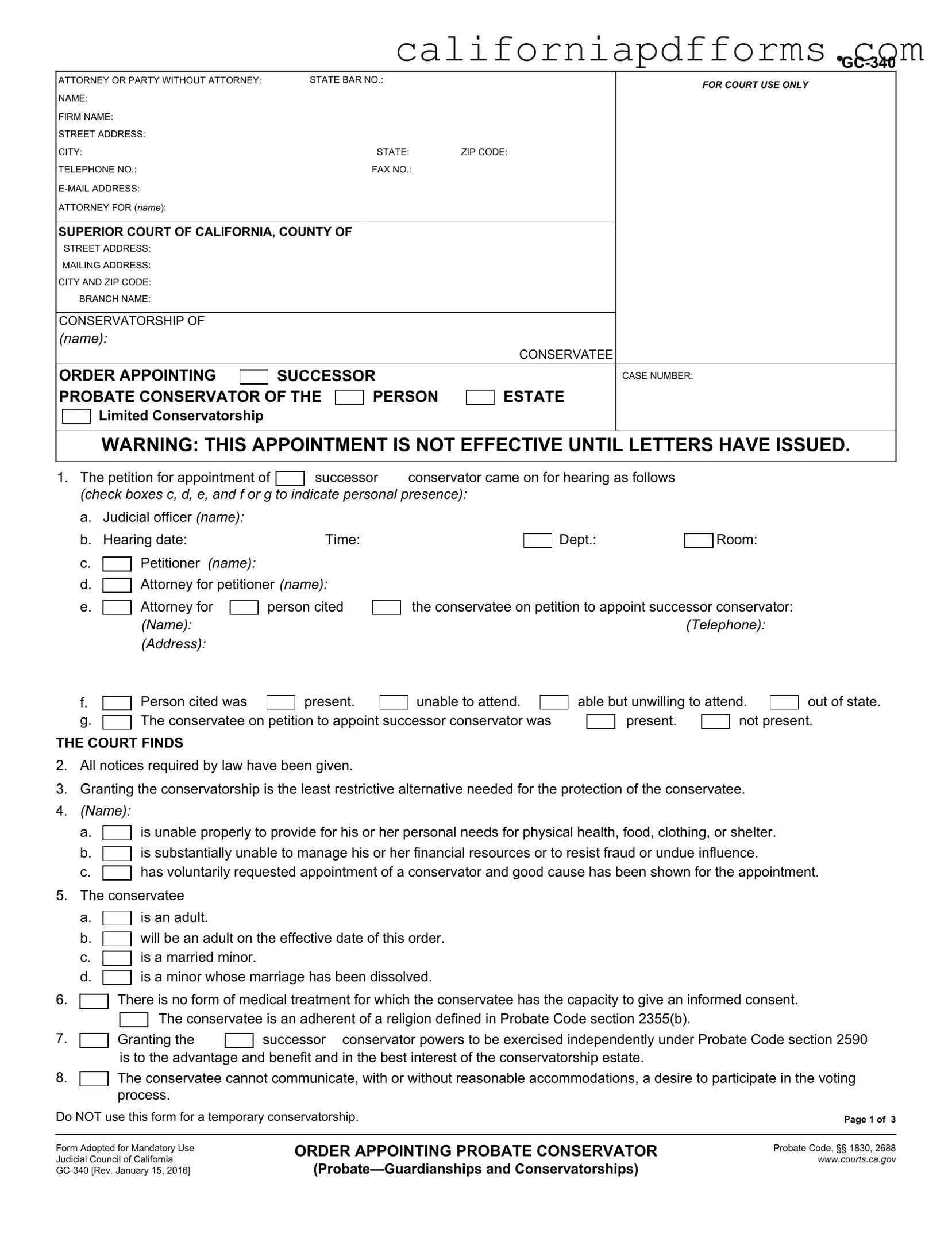The California GC 340 form is used to appoint a successor conservator for an individual who is unable to manage their personal or financial affairs due to incapacity. This form is specifically for conservatorships and is part of the probate process. It ensures that the rights and well-being of the conservatee are protected by appointing a responsible person to make decisions on their behalf.
The GC 340 form can be filed by an attorney or a party without an attorney. This includes individuals who are seeking to be appointed as the successor conservator or those who are representing the conservatee. It is important to ensure that all necessary information is accurately provided on the form to facilitate the court's review.
When completing the GC 340 form, you will need to provide various details, including:
-
Your name and contact information.
-
The name of the conservatee and case number.
-
Details about the hearing, including the date, time, and location.
-
Information about the current conservator and any attorneys involved.
-
Findings related to the conservatee’s ability to manage their affairs.
Completing all sections accurately is crucial for the court's decision-making process.
Once the GC 340 form is submitted, the court will schedule a hearing to review the petition. During the hearing, the judge will assess whether appointing the successor conservator is in the best interest of the conservatee. If approved, the court will issue Letters of Conservatorship, allowing the new conservator to act on behalf of the conservatee.
Can the conservatee attend the hearing?
The conservatee is not required to attend the hearing. In many cases, the court may determine that the conservatee's presence is not necessary, especially if they are unable to participate meaningfully. However, the court will consider the conservatee's situation before making a decision.
What are the responsibilities of a successor conservator?
A successor conservator has several important responsibilities, including:
-
Making decisions regarding the conservatee's personal care and well-being.
-
Managing the conservatee's financial matters and assets.
-
Ensuring that the conservatee receives necessary medical care and treatment.
-
Acting in the best interest of the conservatee at all times.
It is essential for the successor conservator to understand their duties and comply with all legal requirements to protect the conservatee's rights.
